Cynthia Shazel Carmona Reyes
Cynthia Shazel Carmona Reyes is a project manager with the Sustainable Agrifood Systems (SAS) program in Nepal.
Cynthia Shazel Carmona Reyes is a project manager with the Sustainable Agrifood Systems (SAS) program in Nepal.
Lokesh Chaudhary is an agronomist with expertise in seed physiology, crop modelling, precision agriculture and GIS GNSS. He is currently learning about drone piloting, data collection and processing.
At CIMMYT, Chaudhary works on resilient climate agriculture, under which technology transfer is done. Expertise in agronomy, seed and machinery is required and used extensively. He supports in the execution of farmers participatory and on-station demonstrations/research trials on climate-resilient agricultural practices, monitors day-to-day field activities (irrigation, fertilizer, herbicide, insecticide, etc.) and conducts data collection of the farmers participatory/research trials.
The vital tasks for each country to reduce its greenhouse gas (GHG) emissions and limited carbon outputs are daunting, especially with 2030 deadlines imposed by the Paris Climate Agreement only eight years away. National stakeholders would benefit greatly from roadmaps that identify realistic and achievable milestones to point the way forward.
Researchers at the International Maize and Wheat Improvement Center (CIMMYT) have provided just such a road map. Using easily available data, they developed rapid assessment methods and adoption costs for mitigation related to crops, livestock, and forestry to identify priority locations and actions. Their article, “Quantification of economically feasible mitigation potential from agriculture, forestry and other land uses in Mexico”, was published in Carbon Management.
Applying these methods for Mexico, researchers found a national mitigation potential of 87.88 million metric tons (Mt) of carbon dioxide equivalents per year.
“Faced with such an overwhelming issue like climate change, it can be difficult for an individual, an organization, and especially an entire nation to know where to start. We developed a rapid assessment framework, tested in India, Bangladesh, and Mexico, but we believe other nations can use our methods as well,” said Tek Sapkota, the project leader and first author of the paper.
The research specifically focused on climate change mitigation in agriculture, forestry, and other land uses (AFOLU). Agriculture and related land use change contributed about 23% of the world’s anthropogenic GHG emissions in 2016, and that number is expected to increase as more food needs to be produced for the world’s growing population.
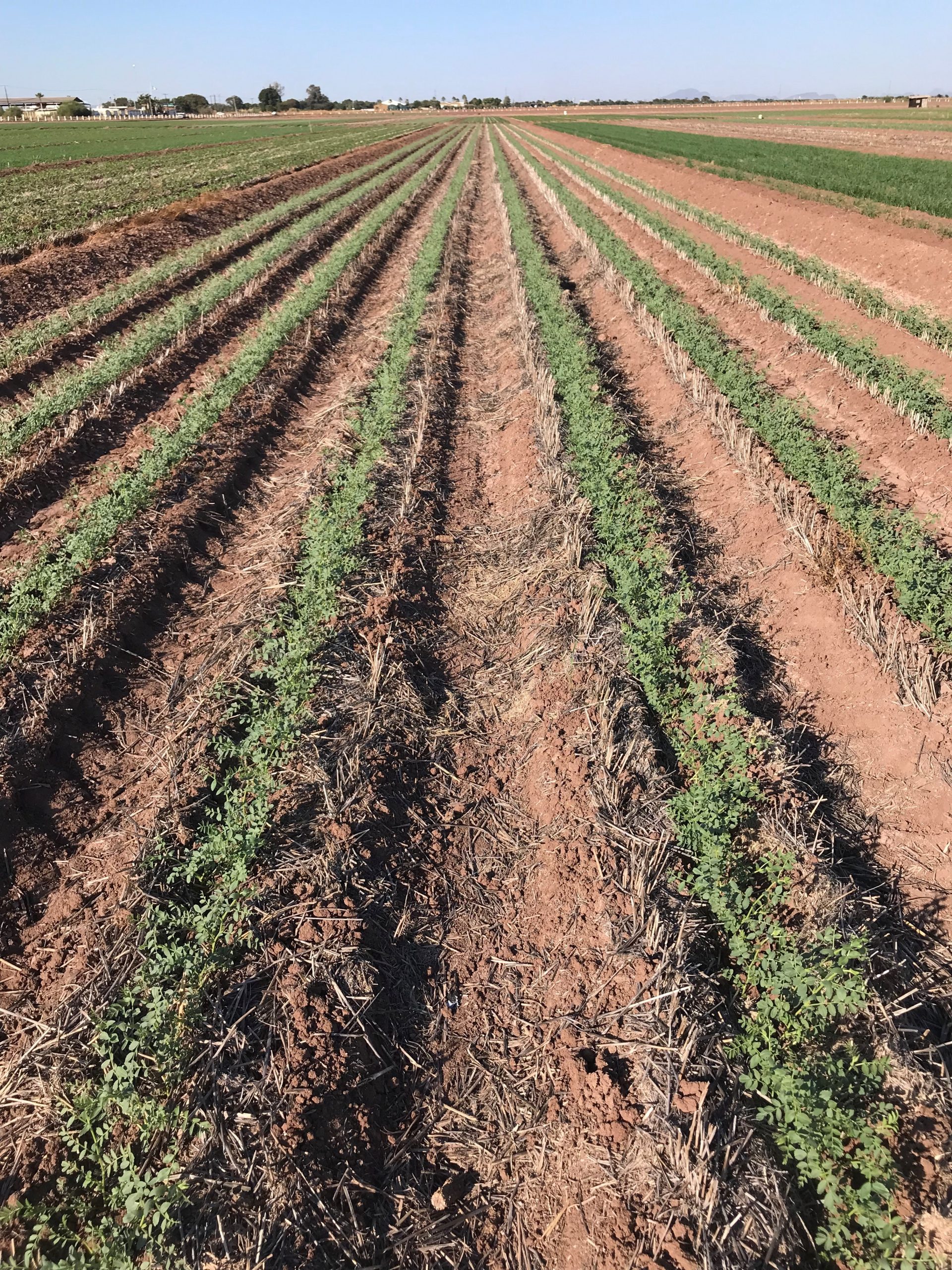
The researchers’ starting point was to quantify baseline emissions and analyze the major sources of emissions. Mexico’s AFOLU sector is responsible for 14.5% of its total national GHG emissions. In Mexico’s agricultural sector, methane and nitrous oxide emissions arise from livestock activities (enteric fermentation and fertilizers), as well as from agricultural activities (soil management and field burning of crop residues). For land use, carbon dioxide emissions and removals result from changes in forest lands, pastures, agricultural land, wetlands, and settlements.
Activities identified for GHG mitigation in crop production included avoiding fertilizer subsidies, since those tend reward inefficient nitrogen use. Subsidies could be of use, however, in encouraging farmers to adopt more efficient nitrogen management. Precision levelling of crop fields can help to lower GHG emissions by reducing cultivation time and improving the efficiency of fertilizer and irrigation water and adoption of conservation agriculture practices, such as zero tillage.
“Adoptions of these practices will not only reduce GHG emissions, but they will also help increase productivity,” said Ivan Ortiz-Monasterio, co-author and Mexico coordinator of the study.
In the livestock sector, mitigation possibilities identified are the creation of official programs, financial support, and capacity building on composting and biodigester. In FOLU sector, researchers identified options such as zero deforestation and C offset in the C market.
In addition to mapping out the mitigation benefits of specific activities, researchers also considered the costs associated with implementing those activities. “Looking at these efforts together with the cost of their implementation provide a complete picture to the implementing bodies to identify and prioritize their mitigation efforts consistent with their development goals,” said Sapkota. For example, some efforts, like increasing nitrogen use efficiency, do not provide the most climate benefits but are relatively inexpensive to realize, while establishing and maintaining carbon capture markets provides large reductions in GHG, they can be expensive to implement.
Researchers examined publicly available AFLOU spatial data for each Mexican state. At the state level, AFOLU mitigation potentials were highest in Chiapas (13 Mt CO2eq) followed by Campeche (8Mt CO2eq), indicating these states can be considered the highest priority for alleviation efforts. They identified an additional 11 states (Oaxaca, Quintana Roo, Yucatan, Jalisco, Sonora, Veracruz, Durango, Chihuahua, Puebla, Michoacán, and Guerrero) as medium priorities with mitigation potentials of 2.5 to 6.5 Mt CO2eq.
“Our data driven, and evidence-based results can help the government of Mexico refine its national GHG inventory and its Nationally Determined Contributions target and monitor progress,” said Eva Wollenberg, the overall coordinator of the study and research professor of University of Vermont, USA. “This analysis further provides an example of a methodology and results to help inform future efforts in other countries in addition to Mexico.”
Read the study: Quantification of economically feasible mitigation potential from agriculture, forestry and other land uses in Mexico
Cover photo: Low nitrogen (at the front) and high nitrogen (at the back) maize planted to address nitrogen use efficiency. (Photo: Ivan Ortiz-Monasterio/CIMMYT)
Gatien Falconnier is a systems agronomist interested in the impact of sustainable agricultural intensification on food security and income, in the smallholder context of sub-Saharan Africa. His work combines on-farm and on-station experimentation, crop and farm modelling, to explore scenarios of change in farmers practices, with current and future climate.
Blessing Mhlanga is a cropping systems agronomist working under the Sustainable Agrifood Systems (SAS) program to improve the livelihoods of smallholder farmers in Eastern and Southern Africa by adapting innovative cropping systems. He obtained his PhD from the Scuola Superiore Sant’Anna in Italy in 2022. He joined CIMMYT as an intern in 2009 and has served as a consultant under different CIMMYT projects since 2016. Blessing has also co-led workpackages under some CG initiatives.
Mazvita Chiduwa works with smallholder farmers in maize-based, mixed farming systems under pressure to improve system resilience. Chiduwa’s training and background are in legume integration into farming systems, including a focus on rhizobia inoculant production, quality control, regulation, and application.
Chiduwa joined CIMMYT in 2022 and is working on diversification of maize-based farming systems in Malawi using conservation agriculture and different intercrop arrangements between maize and the legumes cowpea, groundnut, pigeon pea and soybean. She is also working on developing a digital agronomy decision tool for smallholder farmers, working with farmers in Malawi, Mozambique and Zambia. The pilot work is being implemented in the context of soybean in maize-based systems with the intention to develop it for other crops in future. The main research questions are to do with soybean variety choices, planting dates, crop establishment methods and site-specific nutrient recommendations.
Frédéric Goulet is an agricultural engineer and holds a PhD in sociology. Since 2008, he has been a social scientist at the Centre de Coopération Internationale en Recherche Agronomique pour le Développement (CIRAD, France). Between 2013 and 2018, he was a visiting researcher at INTA-Argentina, then a visiting professor at the Universidade Federal Rural do Rio de Janeiro (Brazil). Since September 2022, he has been a visiting researcher at CIMMYT.
His research focuses on science, technology and innovations studies. It focuses on technological innovation processes in agriculture. More specifically, he is interested in the emergence of new technologies or the decline of problematic technologies, and in the roles played by public policies, agricultural research, input industries and farmers in these processes. Recently, his work has focused on the emergence of biological alternatives to chemical pesticides.
Since 2022, Frédéric Goulet has also been the coordinator of the Public Policies and Rural Development in Latin America network (red PP-AL), a network of scientists and institutions analyzing and acting on agricultural and rural development policies in Latin America.

The Scaling Scan website has been launched offering the latest news, manuals, videos, trainings, a directory of consultants, and a forum to engage with peers and experts on how to use the Scaling Scan tool to support scaling processes.
The website, which was developed by Lennart Woltering, scaling advisor with the International Maize and Wheat Improvement Center (CIMMYT), and the Scaling team in CIMMYT, builds on the success of the Scaling Scan, a user-friendly tool designed for anyone to learn about scaling: appreciate that context is king, that innovations don’t scale alone, and that collaboration is key for success
“The idea behind the Scaling Scan has always been to make it accessible to users of all levels, to bring the discussion on scaling to the ground and therefore, just like the tool, the materials on the site are available in English, French, and Spanish,” said Woltering.
It features materials used in training programs and workshops by CIMMYT’s scaling team over the past five years, repurposing them neatly for users around the world to assess the scalability of their own pilot projects and innovations. The website also includes a forum where users can engage in conversations, exchange information, and ask experts and other users questions and advice related to scaling. The platform also acts as a conversation space, allowing users around the world to share their experiences with the Scaling Scan, ask questions, and learn from each other. This has the added benefit of helping the Scaling Scan team understand on the ground needs so that they can create more user-friendly content.
“The demand for Scaling Scan workshops has been overwhelming, within CIMMYT, the CGIAR, but also with development organizations like Catholic Relief Services and GIZ and the private sector and we realized that we should bank much more on its biggest asset: accessibility. So, in 2022 we started with trainings for facilitators and the website serves as the platform for them to draw inspiration, materials, and methodologies how to apply the Scaling Scan in their context,” said Woltering.
Scaling is a process that aims to achieve sustainable change at scale. This means that not only should many people benefit from a new technology, but the results of a particular project should carry over beyond its immediate context and transform communities for the better.
It’s a complex process, and there is no one single recipe or blueprint. The Scaling Scan can, however, give direction to scaling new projects and highlight key factors scaling teams need to look out for
“The Scaling Scan aims to provide a framework for people to understand how much they should scale, and what else should be taken into consideration, in addition to the technology, for the next steps in their scaling process,” said CIMMYT Scaling Coordinator Eva Marina Valencia Leñero. “It also intends to show that scaling is not only about focusing on where the innovation is ready or mature, but also whether there are enabling conditions – what we call scaling ingredients – surrounding this innovation that managers have to plan for if they want their innovation to last in the long-term.”
“Considering that the core of the tool was developed at a kitchen table with three people over two days with no funding, it is amazing that the tool has served more than 2,000 people in the last five years,” said Woltering. With support from GIZ, the Scaling Scan is now being digitized which allows for the development of different versions, for example one with more emphasis on social inclusion or on climate mitigation for the One CGIAR Low-Emission Food Systems (MITIGATE+) Initiative. The lessons from over five years of applying the Scaling Scan from rural areas in Honduras to Bangladesh are currently being written up.
Anurag Ajay is Monitoring and Evaluation Specialist of CIMMYT’s Cereal Systems Initiative for South Asia (CSISA) project in India.
Ajay seeks to improve the way data is collected and used in the project. He is improving the system of data processing and sharing data publicly. He generates data-driven evidence-based insights that help take key project management decisions and are used for effective planning of project activities. He is the key resource person for programming digital surveys.
Ajay had been actively engaged in planning, coordinating, and facilitating collection of key performance indicator (KPI) data to measure project progress.
Geoffrey Muricho works for CIMMYT as a Monitoring, Evaluation and Learning Specialist based in Nairobi. Before joining CIMMYT, he was a scientist (Monitoring, Learning and Evaluation Specialist) at ICRISAT where he coordinated monitoring, learning and evaluation activities of Bill & Melinda Gates Foundation funded projects (TL III, HOPE II and AVISA) in sub-Saharan Africa and Asia.
Besides monitoring, learning and evaluation, Geoffrey is an experienced research economists with expertise in agricultural technology adoption and impact assessments using quantitative and qualitative methods. Previously, he worked as a Postdoctoral Research Fellow at International Center of Insect Physiology and Ecology (ICIPE) where he focused his research on technology adoption, gender analysis and impact assessments. Before joining ICIPE, he worked as a Research Associate with CIMMYT and ICRISAT. Geoffrey obtained his PhD (Economics) and MSc. (Agricultural Economics) from the University of Nairobi. He also holds BSc (Agr. Econ).
Maxwell Mkondiwa is a CIMMYT Associate Scientist – Spatial Economist based in New Delhi, India. He joined CIMMYT in January 2022.
His research focuses on ex-ante and ex-post spatial economic assessments of the adoption potential and impact of agricultural technologies. The general fields in which he conducts his research include spatial economics, economics of agricultural research, production economics, marketing economics (industrial organization), development economics, applied spatial Bayesian econometrics, and economic applications of mathematical optimization.
He holds a PhD in Applied Economics from University of Minnesota – Twin Cities, an MSc in Applied Economics from University of Minnesota – Twin Cities, an MSc in Research Methods from Jomo Kenyatta University of Agriculture and Technology, and a BSc in Agricultural Economics from Lilongwe University of Agriculture and Natural Resources (Bunda College Campus).
Research for development organizations generate a wealth of knowledge. However, due to time and resource restraints, this knowledge has not been systematically analyzed, and the dynamics of how research is shared online have not been fully understood.
Today, technical advances in text mining, network analysis and hyperlink analysis have made it possible to capture conversations around research outcomes mentioned almost anywhere on the web. New digital research methodologies have emerged offering comprehensive approaches to leverage data across the web and to synthesize it in ways that would be impossible to carry out using traditional approaches.
In a study published in Nature Scientific Reports, scientists from the International Maize and Wheat Improvement Center (CIMMYT) teamed up with researchers from the University of Coimbra and University of Molise to investigate how CIMMYT research in climate change and climate sensitive agriculture is developing and the extent to which the center is exchanging knowledge with communities around the world.
Using text mining, social network analysis and hyperlink analysis to uncover trends, narratives and relationships in digital spaces such as research databases, institutional repositories, and Twitter, the team found that CIMMYT has steadily increased its focus on climate change research and is effectively sharing this knowledge around the world. The authors also found that CIMMYT’s climate research was centered on three main countries: Mexico, India, and Ethiopia.
The novel analytical framework developed by the team will help scientists track where their research is being shared and discussed on the web, from traditional scientific journal databases to social media.
“The web analytics framework proposed in this paper could be a useful tool for many research for development organizations to assess the extent of their knowledge production, dissemination, and influence from an integrated perspective that maps both the scientific landscape and public engagement,” said Bia Carneiro, first author of the paper.
The results of the study showed that sharing of CIMMYT’s climate science research was strongest on academic and research platforms but was also reflected in social media and government and international organization websites from across the Global North and South.
The findings from the study are important for the decolonization of science and the democratization of scientific debate. They show that CIMMYT is decolonizing climate science by sharing, creating, and co-creating knowledge with communities across the globe, particularly in Latin America, South Asia and Africa. On Twitter, the team noted that almost all countries were mentioned in CIMMYT’s Twitter conversations.
The study also shows that CIMMYT is bringing climate science and climate-sensitive agriculture into public debate, particularly through social media platforms, though they note there is potential to share more knowledge through these channels.
According to CIMMYT Agricultural Systems and Climate Change Scientist and coordinator of the study, Tek Sapkota, these types of analyses help research for development organizations to understand how people around the world view their expertise on subject matter, identify their comparative advantage and develop the value proposition of their work going forward.
Read the study: Digital artifacts reveal development and diffusion of climate research
Cover photo: Twitter mentions network for the International Maize and Wheat Improvement Center official account (@CIMMYT). (Credit: Nature Scientific Reports)
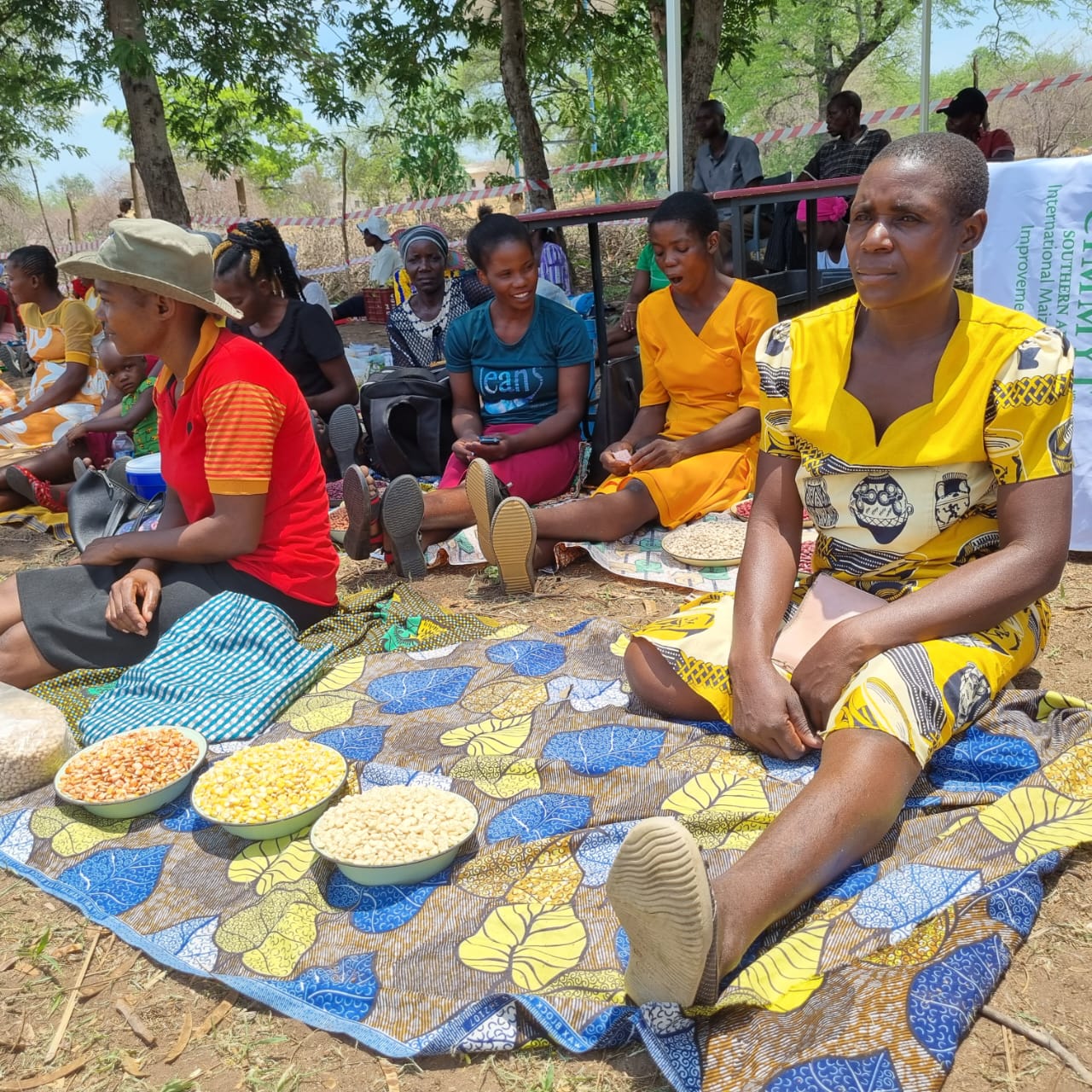
Smallholder farmers in resource-poor communities of Zimbabwe and much of the Global South have been experiencing low crop productivity due to many factors, including inappropriate seeds and seed varieties, labor shortages, loss of agro-biodiversity, insufficient inputs, degrading soils, and recurrent droughts. These threats are now amplified by climate change.
This has resulted in broken food systems rendering food and nutrition insecurity commonplace. The One CGIAR initiative, Transformational Agroecology Across Food, Land, and Water Systems, led by the International Maize and Wheat Improvement Center (CIMMYT) in Zimbabwe, is designed to bring agroecological advances to smallholder famers in an effort to strengthen local food systems.
Smallholder farmers in the Mbire and Murehwa Districts of Zimbabwe were introduced to innovative agroecology interventions, premised on harnessing nature’s goods and services while minimizing adverse environmental impacts and improving farmer-consumer connectivity, knowledge co-creation, and inclusive relationships among food system actors.
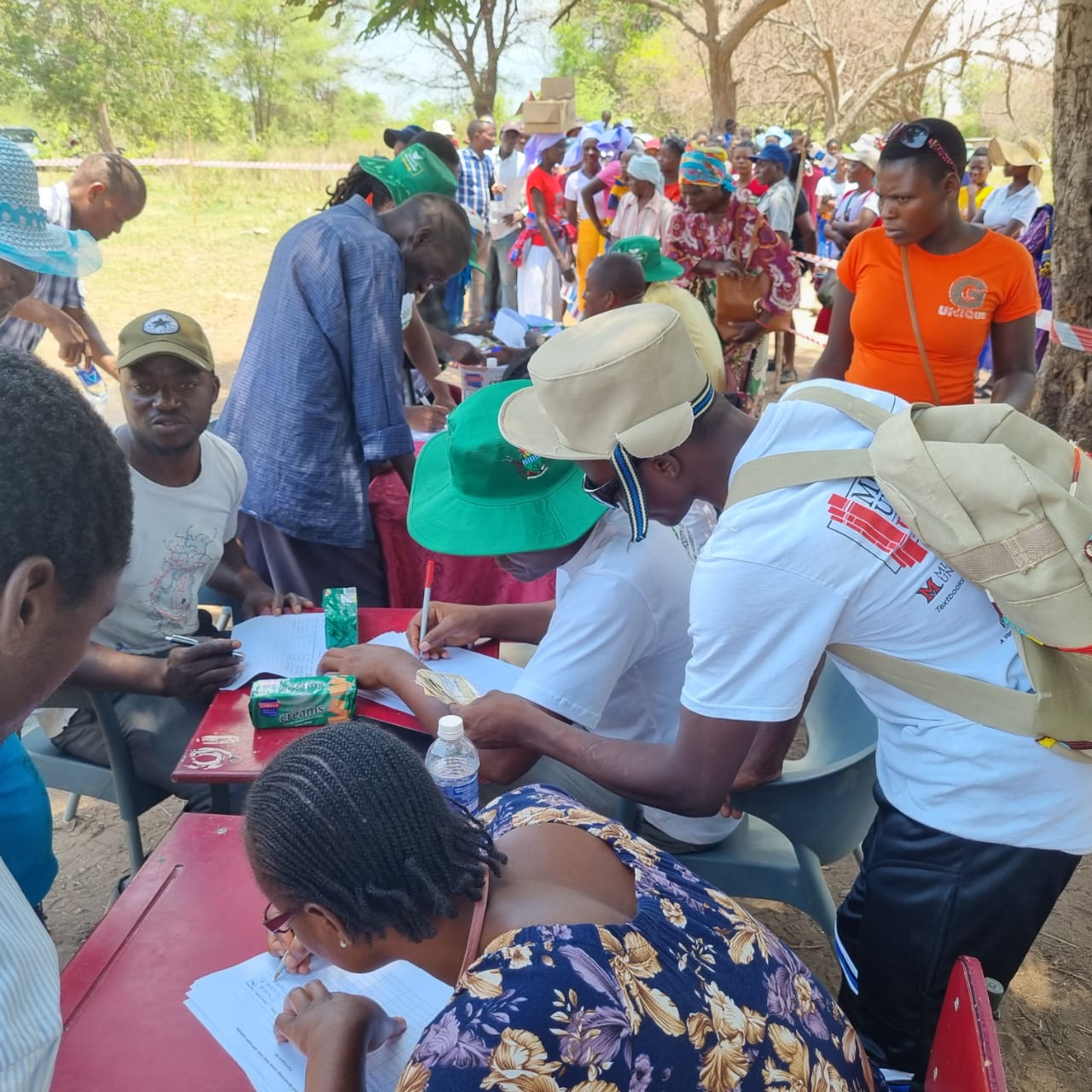
Farmer to farmer collaboration at seed fairs
In response to challenges related to lack of appropriate seeds and eroding agrobiodiversity and, as a way to transition prevailing food systems to more sustainable ones, farmers were invited to take part in seed fairs. The seed fair’s objective was to enable smallholder farmers to access improved and locally adapted seeds of food crops originating from the private sector and fellow farmers. In addition, the seed fairs provided a platform for learning about agroecological practices. Farmers were also given a chance to see different machinery that could aid in land, food, and feed preparation, and address their labor shortage challenges.
At the opening of the seed fair in Mbire, Dorcas Matangi, CIMMYT research associate, acknowledged that smallholder farmers operate in challenging and complex ecological, social, and economic systems and there is a need for interventions that address the natural resource base without ignoring the social and economic dynamics within communities.
“The communal culture of sharing and trading between community members can be capitalized on for a collective benefit, said Matangi. “One such case is through events such as seed fairs where we encourage farmers to showcase and sell seeds they know perform very well.”
She further explained to the participating farmers how increasing their crop diversity and using practices such as conservation agriculture techniques benefit the environment and improves food security and nutrition.
“I am grateful for these efforts,” said Grace Musandaira, supervisor of the Agriculture Advisory and Rural Development Service. “Our region is arid, and as such, it is very difficult for our farmers to achieve significant yields to assure them there is enough food for the year. In addition, the knowledge provision relating to preserving and improving agrobiodiversity through agroecological practices is set to improve rural livelihoods.”
Senzeni Nyagonye, a farmer in Mbire, said “This initiative is teaching and exposing us to so many new concepts such as conservation agriculture with mechanization. If we can apply conservation agriculture with the seeds we bought at this seed fair, we are optimistic about a great harvest.”
A total of 1,058 farmers attended two seed fairs in Mbire and Murehwa. Farmers had the opportunity to access a variety of crop seeds ranging from maize, to sorghum, millets, groundnuts, bambara groundnuts, and sunflowers. More than 200 farmers exhibited local seeds that were available for sale or exchange. Private seed companies also showcased and sold certified drought-tolerant maize, sorghum, bean and cowpea varieties.
“The seed fairs in Mbire and Murehwa were very successful”, said Matangi. “And we feel these efforts will serve as a useful case study to guide a national scale-up.”
In an interview, Bram Govaerts, Director General of the International Maize and Wheat Improvement Center (CIMMYT), highlights the challenges facing crop cultivation management and agricultural product trade in Mexico and the rest of the world.
“At present, one of the most pressing challenges [in Mexico] is water scarcity exacerbated by la Niña’s occurrence,” explains Govaerts. “The global average of freshwater consumption for food production is 70 percent. However, Mexico ranks 24 in a global Water Stress Index facing high levels of stress by consuming between 40 and 80 percent of water supplies available in any given year.”
The article explores successful local sustainable grain sourcing projects in Mexico, research into sustainable global agricultural development, genetically-modified crops and their connection to biodiversity, and soil health.
Read the original article: Mexico Agriculture: Thrive on the Shift from Efficiency to Resiliency
Attieke is the national dish of Ivory Coast. Served with fried fish or a vegetable stew, this tangy, fermented side is the heart and soul of Ivorian cuisine. And because it’s made from cassava, attieke is gluten free. So, in addition to its status as an iconic food of hospitality from Abidjan to Yamoussoukro, attieke has the potential to catch on in distant locales.
Producing attieke is complicated—transforming tubers in the ground into a delicious bowl of couscous-like cassava involves harvesting, peeling, grinding, fermenting, pressing, and effectively storing the processed crop. And in Ivory Coast, this work is traditionally performed almost entirely by women.
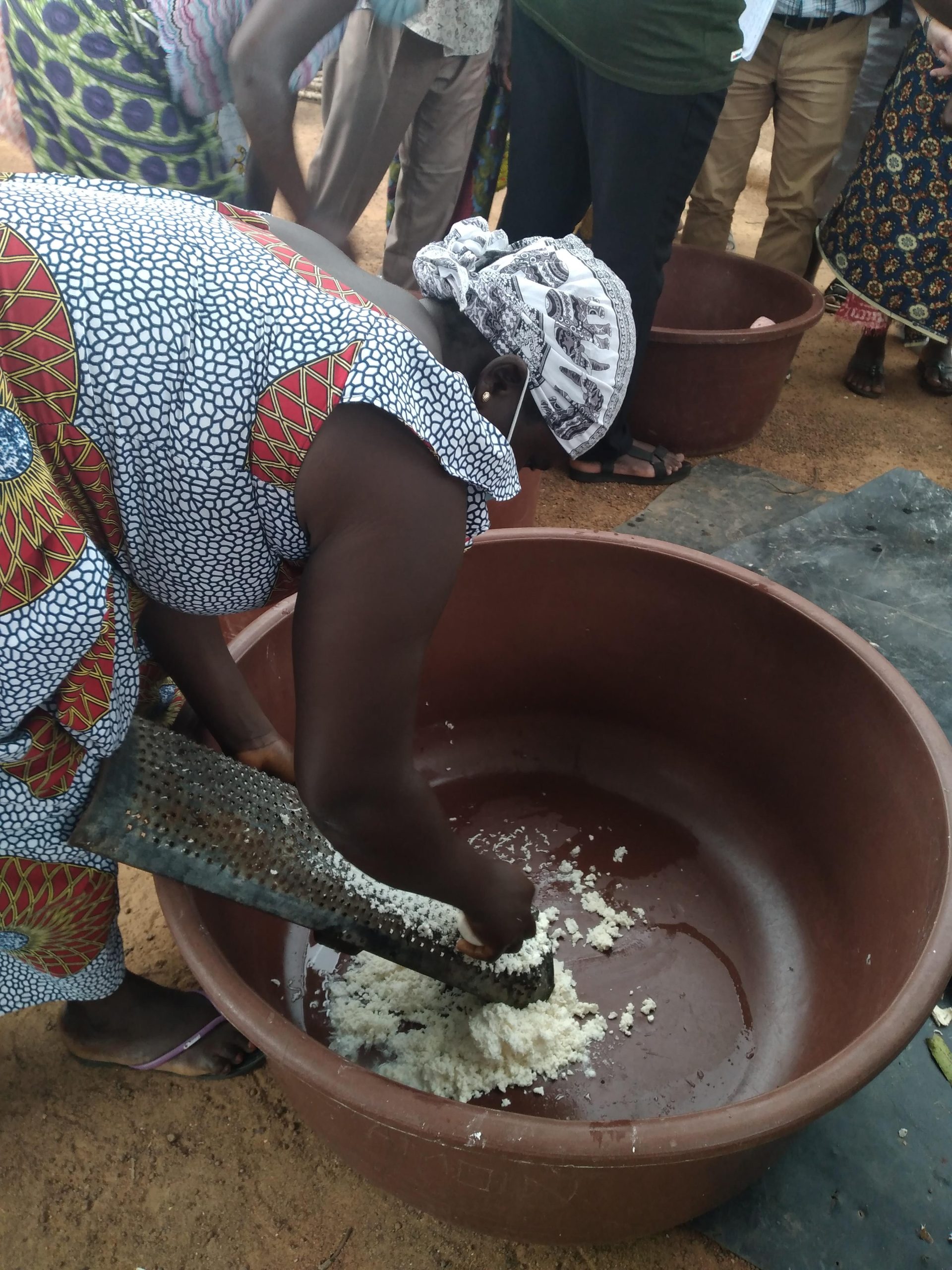
A grueling process
Traditional methods for processing cassava, however, are very slow and extremely laborious. “We had to use a wooden plank with nails [to grind cassava]”, said N’Zouako Akissi Benedicte, president of the local agricultural cooperative in Mahounou, Nanafoue, about 30 kilometers from the capital, Yamoussoukro. To remove the liquid from the ground cassava, Ivorian women used “a kind of screw press” that required so much strength that “it caused us pain in the chest.”
In addition to being painful and grueling, these manual methods are terribly inefficient, generating about 30 kilograms of product per hour. Benedicte said a worker could process very little cassava in a day’s work using this traditional approach. Limited physically by this hard manual labor and struggling to generate enough income to establish financial independence, women working in cassava production in Ivory Coast face difficult challenges.
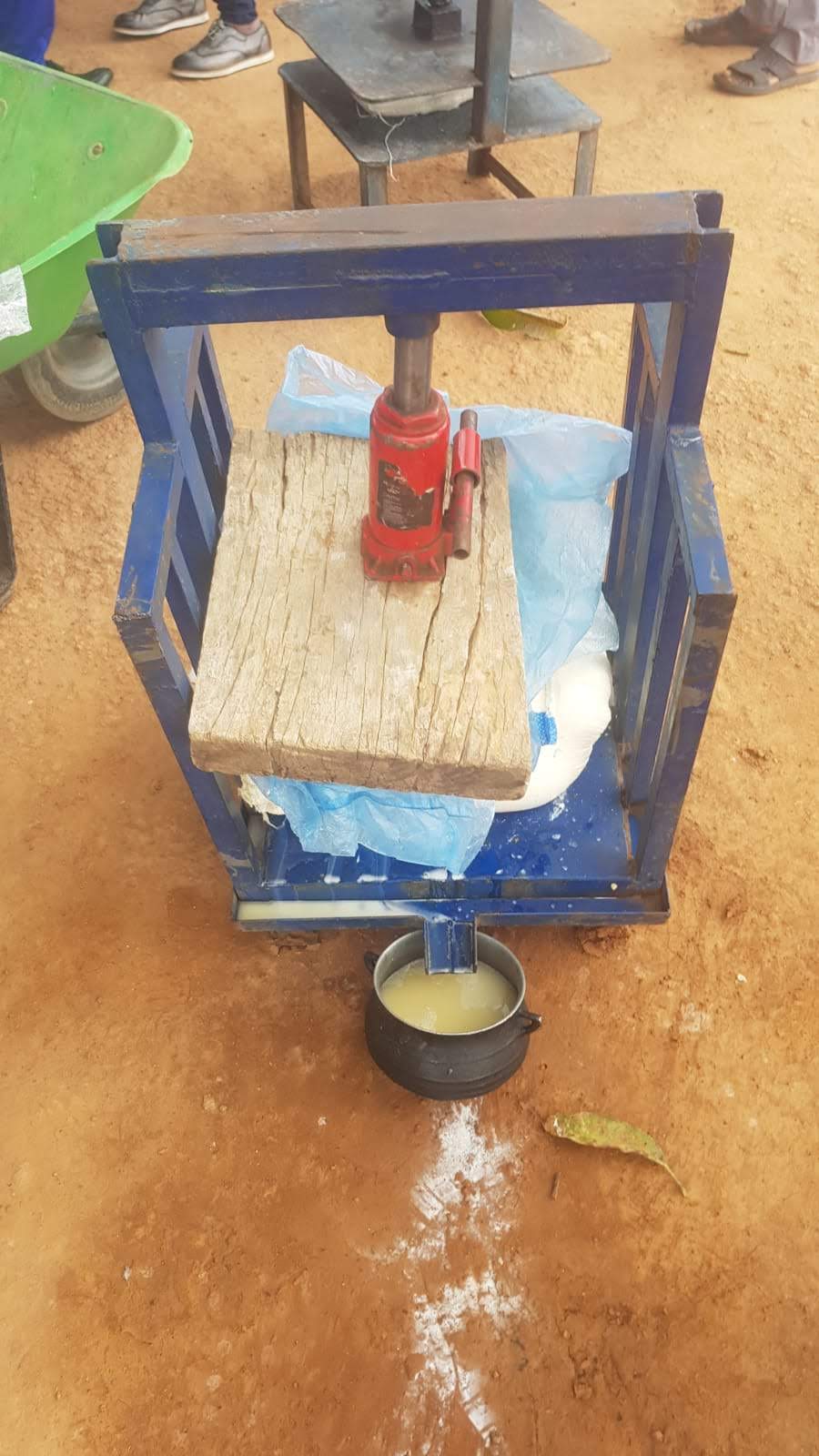
Lightening the load
Three years ago, things started to change for Benedicte and other women working in cassava production in her area. At that time, her cooperative partnered with the Green Innovation Centers for the Agriculture and Food Sector (GIC) of Ivory Coast to receive training to use hydraulic-powered cassava grinders and presses. These machines, which GIC helped design and adapt for the climate and cultural context of Ivory Coast, promised to significantly increase speed of production while making all aspects of cassava work more accessible to women. For instance, the grinding capacity of the equipment is around 600 kg/hr.
Launched in 2014 by Germany’s Federal Ministry for Economic Cooperation and Development’s special initiative, ONE WORLD no hunger, GIC collaborates with the International Maize and Wheat Improvement Center (CIMMYT) to increase agricultural mechanization in 14 countries in Africa and two in Asia.
Beyond helping Benedicte’s cooperative finance the purchase of the new machines and providing instruction in their use, GIC offered the agricultural cooperative a broad range of seminars on topics including selecting seed varieties, soil preparation, processing, and commercialization. This comprehensive approach set the women of Mahounou, Nanafoue up for success.
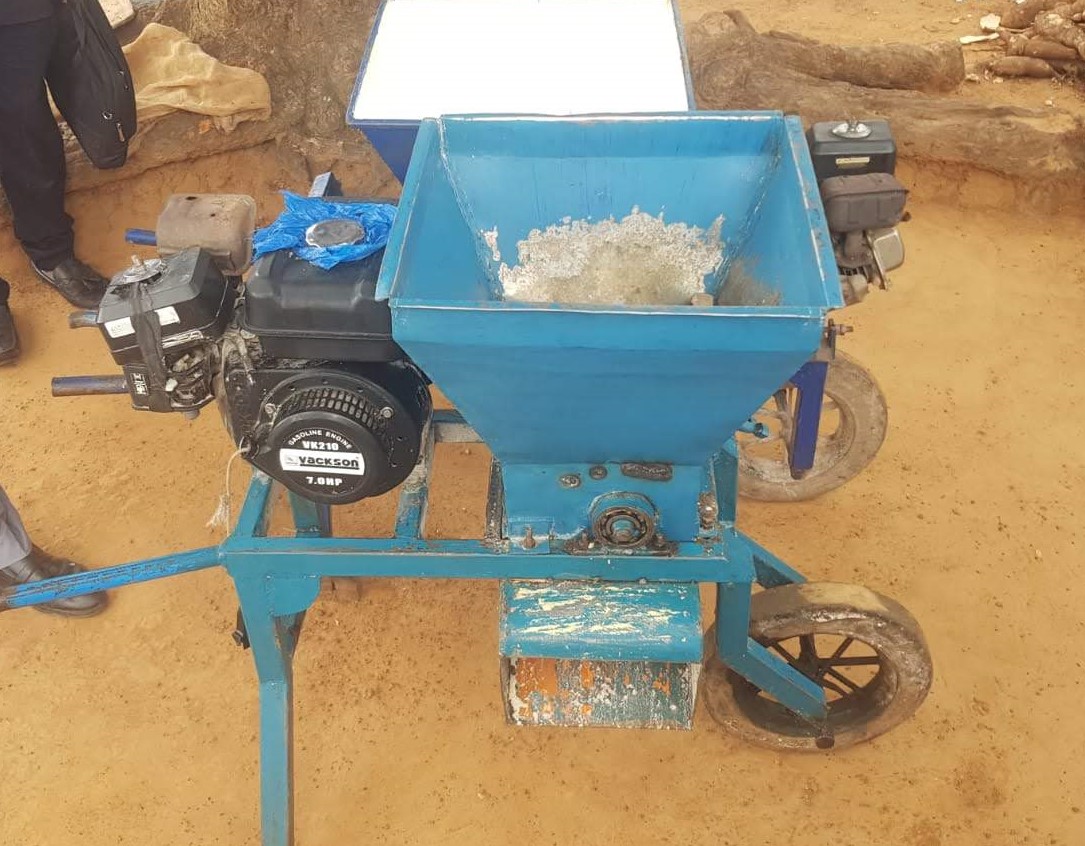
A message for my sisters
For Benedicte, the new grinder and press are making a huge difference. “The press with the hydraulic system is very efficient and we no longer need to use so much effort to remove the juice,” she said. According to Benedicte, workers in the cooperative are now processing up 1,000% more cassava per day and are only limited by the availability of raw material.
Better yield is also generating financial improvements for these women. “A woman who is working can buy her own machine and earn money that can be used for the education of her children,” Benedicte said. “I have a message for my sisters: a woman cannot solely depend on her husband and expect him to provide everything.”
GIC is working with 32 other groups like Benedicte in Ivory Coast, and the mechanization program has impacted the work of 1,000 women so far.
Taking the next step
There are still hurdles to overcome. In Mahounou, women producing cassava are relying on men to ignite the machines, and when a grinder or a press breaks down, it can be difficult to find spare parts. Benedicte believes electric machines could help solve both problems and take their business to the next level. “We would like to increase our production and sell it at an international level,” she said. “We would like to have a small processing unit here for women that could be used to produce high quality products for the international markets.”
GIC also has plans for a technology transfer that could reproduce this successful program in Malawi. Ivorian staff are collaborating with colleagues there to develop a cassava grinder and press for the Malawian context.
For Benedicte, there is more than food and income at stake in the success of these efforts. “It is important to be autonomous in taking charge of our own expenses,” she said. “This is being a woman. So, please, I invite my sisters to work.”
Cover photo: N’Zouako Akissi Benedicte, president of the local agricultural cooperative, with cooperative members and mechanical cassava grinders. (Photo: Sylvanus Odjo/CIMMYT)